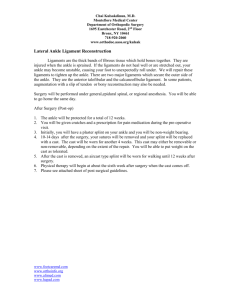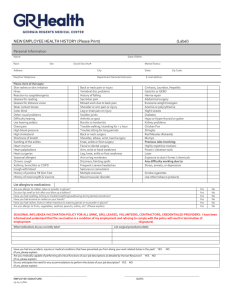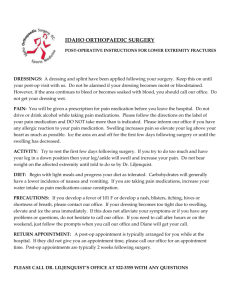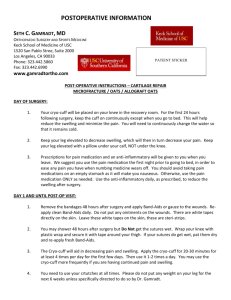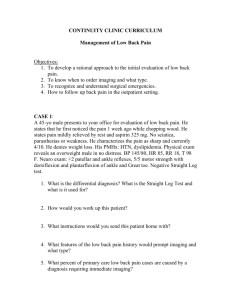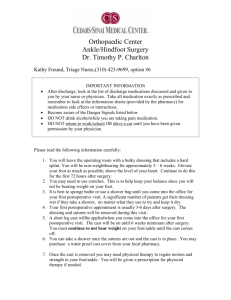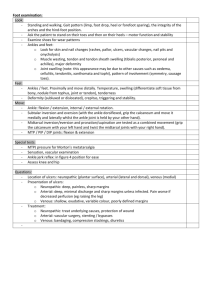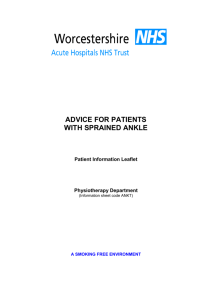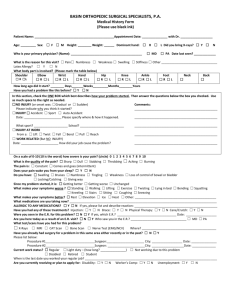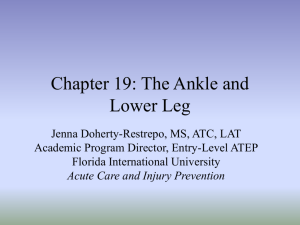Patient`s Instructions for an Upper Extremity Injury
advertisement
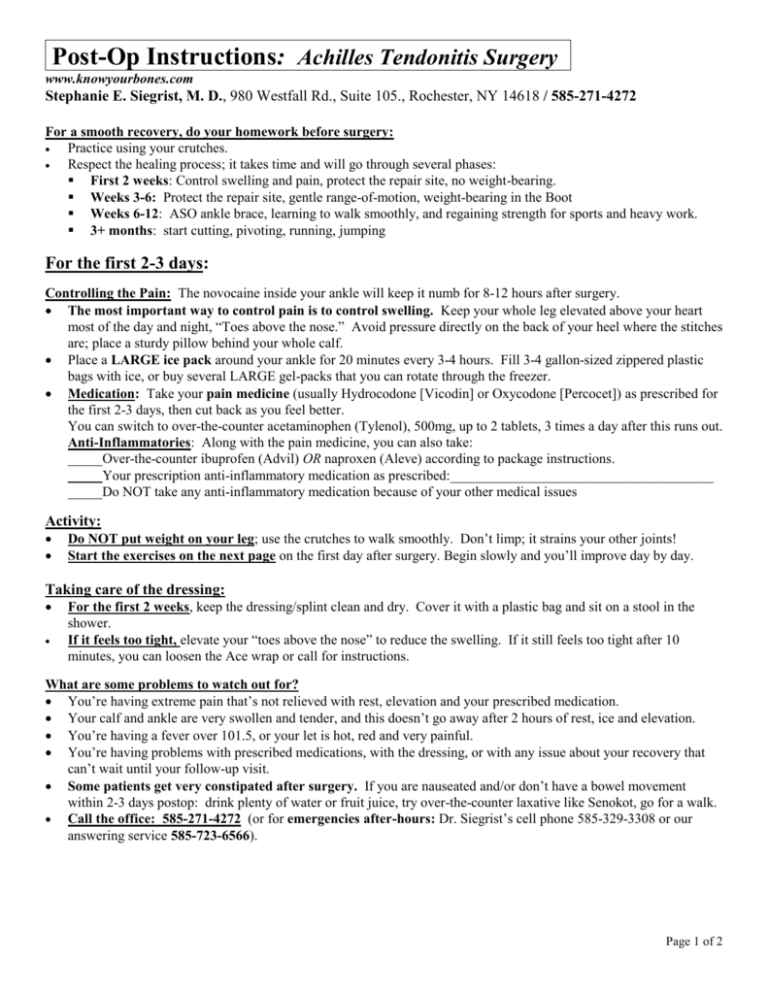
Post-Op Instructions: Achilles Tendonitis Surgery www.knowyourbones.com Stephanie E. Siegrist, M. D., 980 Westfall Rd., Suite 105., Rochester, NY 14618 / 585-271-4272 For a smooth recovery, do your homework before surgery: Practice using your crutches. Respect the healing process; it takes time and will go through several phases: First 2 weeks: Control swelling and pain, protect the repair site, no weight-bearing. Weeks 3-6: Protect the repair site, gentle range-of-motion, weight-bearing in the Boot Weeks 6-12: ASO ankle brace, learning to walk smoothly, and regaining strength for sports and heavy work. 3+ months: start cutting, pivoting, running, jumping For the first 2-3 days: Controlling the Pain: The novocaine inside your ankle will keep it numb for 8-12 hours after surgery. The most important way to control pain is to control swelling. Keep your whole leg elevated above your heart most of the day and night, “Toes above the nose.” Avoid pressure directly on the back of your heel where the stitches are; place a sturdy pillow behind your whole calf. Place a LARGE ice pack around your ankle for 20 minutes every 3-4 hours. Fill 3-4 gallon-sized zippered plastic bags with ice, or buy several LARGE gel-packs that you can rotate through the freezer. Medication: Take your pain medicine (usually Hydrocodone [Vicodin] or Oxycodone [Percocet]) as prescribed for the first 2-3 days, then cut back as you feel better. You can switch to over-the-counter acetaminophen (Tylenol), 500mg, up to 2 tablets, 3 times a day after this runs out. Anti-Inflammatories: Along with the pain medicine, you can also take: _____Over-the-counter ibuprofen (Advil) OR naproxen (Aleve) according to package instructions. _____Your prescription anti-inflammatory medication as prescribed:______________________________________ _____Do NOT take any anti-inflammatory medication because of your other medical issues Activity: Do NOT put weight on your leg; use the crutches to walk smoothly. Don’t limp; it strains your other joints! Start the exercises on the next page on the first day after surgery. Begin slowly and you’ll improve day by day. Taking care of the dressing: For the first 2 weeks, keep the dressing/splint clean and dry. Cover it with a plastic bag and sit on a stool in the shower. If it feels too tight, elevate your “toes above the nose” to reduce the swelling. If it still feels too tight after 10 minutes, you can loosen the Ace wrap or call for instructions. What are some problems to watch out for? You’re having extreme pain that’s not relieved with rest, elevation and your prescribed medication. Your calf and ankle are very swollen and tender, and this doesn’t go away after 2 hours of rest, ice and elevation. You’re having a fever over 101.5, or your let is hot, red and very painful. You’re having problems with prescribed medications, with the dressing, or with any issue about your recovery that can’t wait until your follow-up visit. Some patients get very constipated after surgery. If you are nauseated and/or don’t have a bowel movement within 2-3 days postop: drink plenty of water or fruit juice, try over-the-counter laxative like Senokot, go for a walk. Call the office: 585-271-4272 (or for emergencies after-hours: Dr. Siegrist’s cell phone 585-329-3308 or our answering service 585-723-6566). Page 1 of 2 Postop: Achilles Tendonitis Surgery, Page 2, S. Siegrist, MD For the next 3-14 days: Elevate your leg while resting to let any swelling drain back into circulation. Gradually increase the time you spend up and about. Pain and swelling at this stage mean you’re overdoing it! Continue to use your crutches or walker to avoid any weight-bearing on the leg. You can apply the ice less often, only as you feel you need it. You can cut your pain medication dose as you feel better: cut the pills in half, or take them less often. It’s OK to drive IF you had LEFT ankle surgery and are confident about controlling your car. If you had RIGHT ankle surgery, it will take 6 weeks or longer. Use common sense; DON’T drive if you can’t safely manage the pedals. Physical therapy will usually start after 6 weeks to build strength and endurance. The priority is to protect the repaired tendon for 6 weeks while mobilizing the whole leg. Straight Leg Raises –strengthen your quadriceps (4 muscles in front of your thigh; major knee supporters) Sit in a chair or lie on your back. Tighten your thigh muscles to lift your heel off the floor/bed about 6”. Hold for 5 seconds, Do 10 repetitions, 4 times/day. These will get easier each day. Move both shoulders, elbows, hips and knees through a full range of motion a few times a day to prevent stiffness. Toe Pumps –improve your circulation, reduce swelling and prevent blood clots. Elevate your ankle above your hip (so the swelling can flow “downhill”) Contract your shin and calf muscles to move your toes up and down within the splint. 2-3 minutes, 4 times/day, or whenever your leg seems swollen. At your 2-week postop visit: Your stitches and the splint will be removed. We’ll replace the splint with a walking Boot and you can start to bear weight on your foot. We’ll review the surgical findings and talk about what you can expect from your ankle in the future. At your 6-week postop visit: We’ll replace the Boot with a smaller ankle brace that will fit in your shoe. You’ll move on to more aggressive exercises as your ankle heals with Physical Therapy to work on strengthening, balance and preventing another injury. Page 2 of 2

